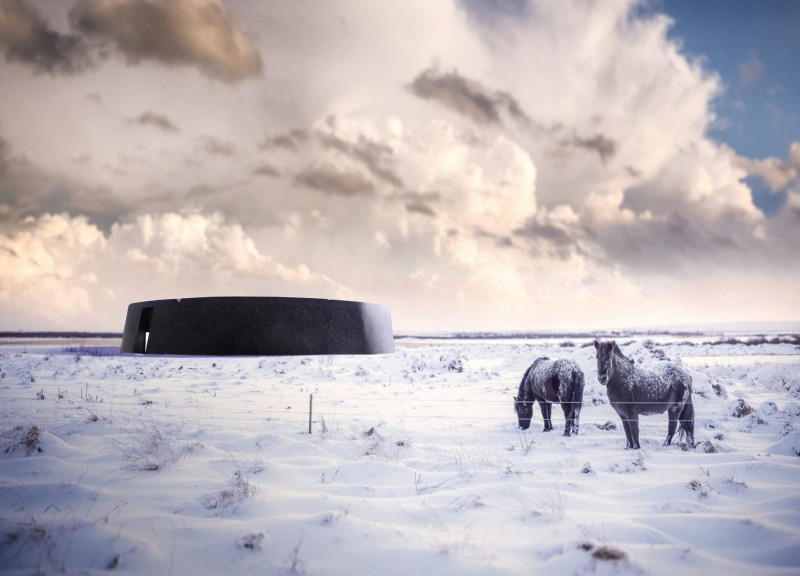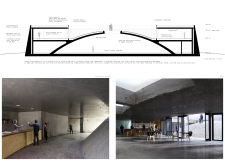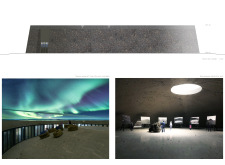5 key facts about this project
The Iceland Volcano Museum is located in the Myvatn area of Iceland, a region defined by its unique volcanic landscape. The museum plays an educational role, allowing visitors to connect with the geological history of the area and its natural features. The design is centered around a circular form that reflects the ancient forces that shaped this land, creating a structure that fits well into its environment.
External Aesthetics
The museum features a solid curved wall made from black local stone, a choice that captures the essence of Iceland's rugged landscape. This durable exterior is designed to withstand harsh weather conditions, seismic events, and possible lava flows typical of the region. The overall appearance evokes the image of a lighthouse standing firm against nature, symbolizing resilience in an unforgiving setting.
Interior Organization
Inside, the building is arranged around a circular corridor that encircles a central dome. This design encourages exploration and movement. Visitors enter a multipurpose room that benefits from natural light coming through a circular opening in the roof. This flooding of light adds a vibrant quality to the space and helps to connect the interior with the outside world.
Vertical Circulation
The first floor takes visitors to a wind-protected circular court, an area with ample natural light that serves as a central point. Visitors are invited to move up a gentle slope leading to the top of the museum. From this elevated position, panoramic views open up, showcasing significant geological features such as the Dimmuborgir rock formations and Hverfjall crater. The wide view narrows the gap between the visitor and the landscape, making the geological history vivid and engaging.
Materiality
The choice of materials is an important aspect of the overall design. Insulation made from Icelandic natural wool reflects regional building traditions and a focus on sustainability. Precast black concrete elements are used throughout, combining modern techniques with traditional building forms. Power floated concrete surfaces enhance durability and maintain visual consistency in the museum's interior.
The careful design includes notches on the roof that act as guides to major local sites. This feature offers a tactile map of the surrounding landscape, inviting visitors to explore and understand the rich geological narrative of the area.






















































